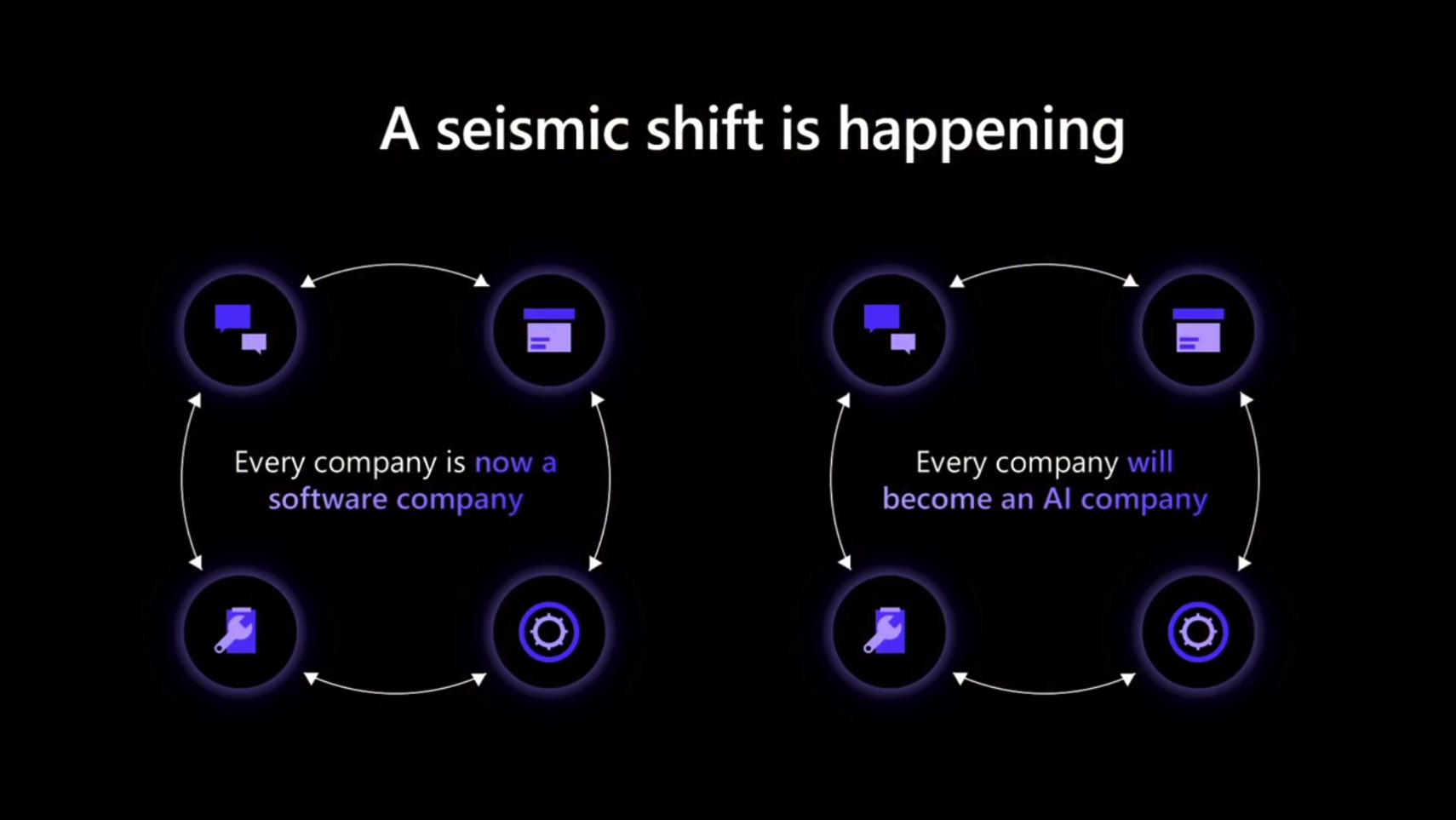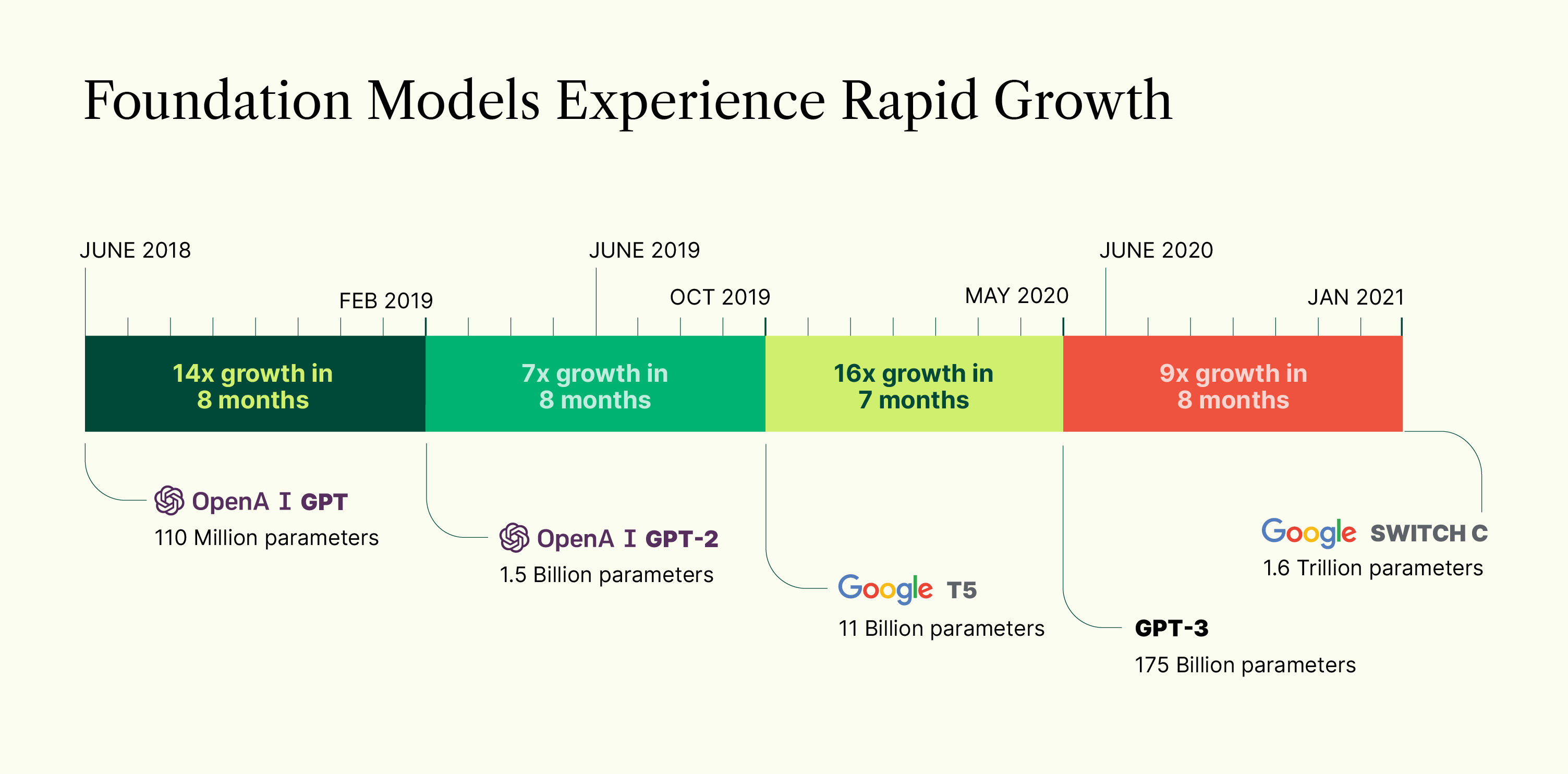Microsoft is at an inflection point propelled by changes in AI-driven applications, Charles Lamanna told the 260+ crowd of attendees at Madrona’s inaugural IA Summit in Seattle in November 2022. As Corporate VP for Business Apps and Platform at Microsoft, Charles recognizes that intelligence will be everywhere in software and low-code no-code implementations will be the pathway to bringing intelligence to business applications without needing dedicated developers. Charles’ team has anchored its plans for the next few years around reimaging business applications and low-code platforms for the AI-driven world.
Microsoft has been focused on digital transformation for the last 10 years. They’ve been helping every company become a software company — helping them compete with digitally native companies, hire developers, and build software — but now the world is transitioning, and Charles sees Microsoft pivoting to help every company become an AI company.
“And most folks, when they say that, won’t know exactly what that means. Just that they want intelligence in the solutions they build and the solutions they consume,” he said, adding that this transition to AI companies will be another “big period of disruption.”

Sure that application intelligence that anyone can build will “completely define this era of business software,” Charles laid out how Microsoft envisions the future and the work they’re doing to find ways to build the next generation of applications that are actually intelligent. The future as he sees it: A few large foundation models as the base with many low-code no-code derivatives branching off to create intelligent business applications that provide the actual value to users. And, much of this AI will still have humans in the loop, he said.
Big data is dead, foundation models are the future
As Charles explained, 10 to 15 years ago, companies were data-poor — they knew very little about their customer. Now companies are data rich. In fact, a company may have hundreds of petabytes of data coming from digital products, communication, and collaboration. “We’re in an era where big data is dead — it is not the big transformational thing anymore,” he said.
So, instead of focusing on their big data strategy, what companies don’t yet have and need to formulate is their AI Strategy. Global companies have invested in making their data a strategic asset, doing the work to bring together historically fragmented data using cloud-native and on-premises tooling and solutions. So, there is a significant opportunity to intelligently reimagine workflows and business processes. But to get value out of their data and become an AI company, these companies need to funnel that data into foundation models, which Microsoft believes should be the foundation of any company’s AI Strategy.
These huge foundation models have been growing substantially in recent years, generating a lot of buzz around them, and increasingly they are the foundation for any intelligent application. Microsoft clearly staked its flag in this technology in 2019 with its $1 billion investment in OpenAI — the creator of perhaps two of the most well-known foundation models, GTP-3 and DALL-E 2. The OpenAI investment, coupled with Microsoft’s 2018 purchase of GitHub, make it clear the company has a birds-eye view into how this technology comes together and insight into how to extend it to more business applications. And Charles’s vision of the future is one in which a few large foundation models exist with derivatives branching from them tuned to solve specific business problems.
“These [derivatives] don’t require that much work compared to the original model but are the ones that provide the actual value,” Charles said, adding that he sees hundreds of unicorn companies just waiting to be created out of the innovation possible through these derivatives built on top of large foundation models.
Take OpenAI, for example. They created GTP-3 and, with some additional tuning, created DALL-E and Codex. Codex is the evolved version of GTP-3 focused on programming languages, a version of which is used in GitHub Copilot, Charles explained. Now Microsoft can create a derivative of that version of Codex to create versions for business applications, which they’ve already started to do. And to do it, they don’t have to retrain GTP-3, which would be cost prohibitive, especially if Charles is right and foundation models will get 1,000 times bigger in ten years. But instead, Microsoft can take the derivative of GTP-3 and do 12 to 24 hours of retraining and some prompt engineering to create a natural-language-to-workflow engine, for example. This allows someone to say, “When someone submits a document to the share file or the share location, email their manager for approval. And if they approve it, mark the document as final.” Microsoft has done similar work for data queries and BI, coaching sales engineers on calls, and general marketing content.
Humans in the loop
When it comes to AI, responsible AI principles do, of course, play a role because these models can and do produce some disturbing results. Charles says that making sure you’re using these models in the right scenario, in the right way, and with the right human oversight is the only way they will be able to take off without huge regulatory backlash.
While artificial general intelligence, and possibly even sentience, is always being researched, Charles doesn’t see modern, intelligent applications as being completely autonomous. They’ll have humans in the loop, meaning that AI-driven apps have the intelligence to reach out to humans as necessary when important decisions need to be made.
The first big example of this, and probably the most broadly known example, is GitHub Copilot, though Charles said Ghostwriter is the same type of idea. Copilot, which was made generally available in July 2022, autocompletes and fills out a user’s code. The AI suggests upward of 30% of code for people who use the capability, Charles said, adding that it is just V1. Charles thinks that every process people do in the office will eventually have a Copilot of some form. Really, he said, any sector that has heavy natural language usage and repetitive actions, like legal, professional service, contact centers, customer support, and sales, is ripe for this type of intelligent disruption.
Democratization of application development with low-code no-code
The developer shortage is a well-known problem – universities have been building out their programs for years to keep up, and large tech companies are implementing programs to train their own people. Still, not enough people are learning to write code to meet the demand. Understanding this roadblock, Microsoft is focusing on low-code no-code to democratize application development.
Excel, for example, is the classic low-code solution that billions of people know how to use — that’s billions of people who could be low-code developers. The coding language Python, a “pro code” language as Charles calls it, by comparison, only has about 10 million people who can write it.
At Microsoft, this is where that Power Platform comes in. It’s their low-code no-code way for people to build many of these solutions. And increasingly, they’re working to make the Power Platform even more intelligent by allowing users to use natural language to tell a program what to do, similar to how DALL-E works, which Charles calls the ultimate low-code no-code way of building images.
As Microsoft works to make its applications more intelligent, a core principle the company has is that its low-code platforms need to work from the simple to the complex. They want their platforms to work for business users in the finance department, operations, sales, or customer service, but also by IT and pro developers. If something gets really popular — meaning it has a lot of usage inside the Power Platform — an alert can go to IT, so they can take it over without having to rewrite it.
It will no longer just be IT and RPA specialists who can fix people’s problems, Charles said. “It’s anyone who can describe their problem in natural language.”
